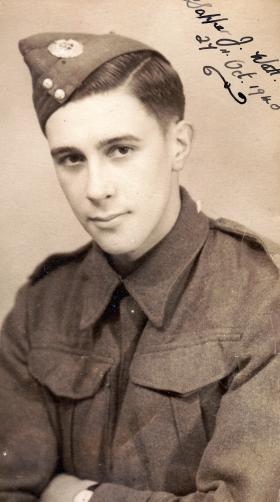James Watt worked as an accountant before he enlisted into The Corps of Royal Engineers (RE) in March 1940.
From No 3 TBRE (Training Battalion Royal Engineers) Sapper Watts was posted 9th Field Company RE (9 Fld Coy) in July 1940.
He volunteered for airborne forces when 9 Fld Coy became part of Airborne Forces in May 1942, when 9th Field Company RE (Airborne) provided the engineer support for the newly formed 1st Airlanding Brigade, with about one-third of the Company in the parachute role and the remainder glider-borne.
Corporal Watt was one of those trained as a military parachutist and undertook course 14 at RAF Ringway. The course ran from 25 May to 4 June 1942 and included a fatality during the jump training.
In April 1943 Cpl Watt went with 9th Field Company RE (Airborne) to North Africa and on 9 July 1943, as part of 1st Airlanding Brigade, assisted in the capture of the Ponte Grande Bridge at Syracuse in Sicily, fighting alongside the 1st Border Regiment and 2nd South Staffordshire Regiment.
In August 1944 Cpl Watt damaged his ankle suffering a Pott’s fracture and this is probably why he did take part in Operation Market Garden with his coy.
On VE Day, 1st Airborne Division was ordered to Norway to accept the surrender of the Germans there. While in Norway 9 Field Company was reorganized, renamed 9th Airborne Squadron and redeployed to Palestine to join 6th Airborne Division.
After service in both Norway and Palestine, Cpl Watt returned to the UK in May 1946 and demobbed in August 1946.
By Wendy George
Read More



Latest Comments
There are currently no comments for this content.
Add Comment
In order to add comments you must be registered with ParaData.
If you are currently a ParaData member please login.
If you are not currently a ParaData member but wish to get involved please register.